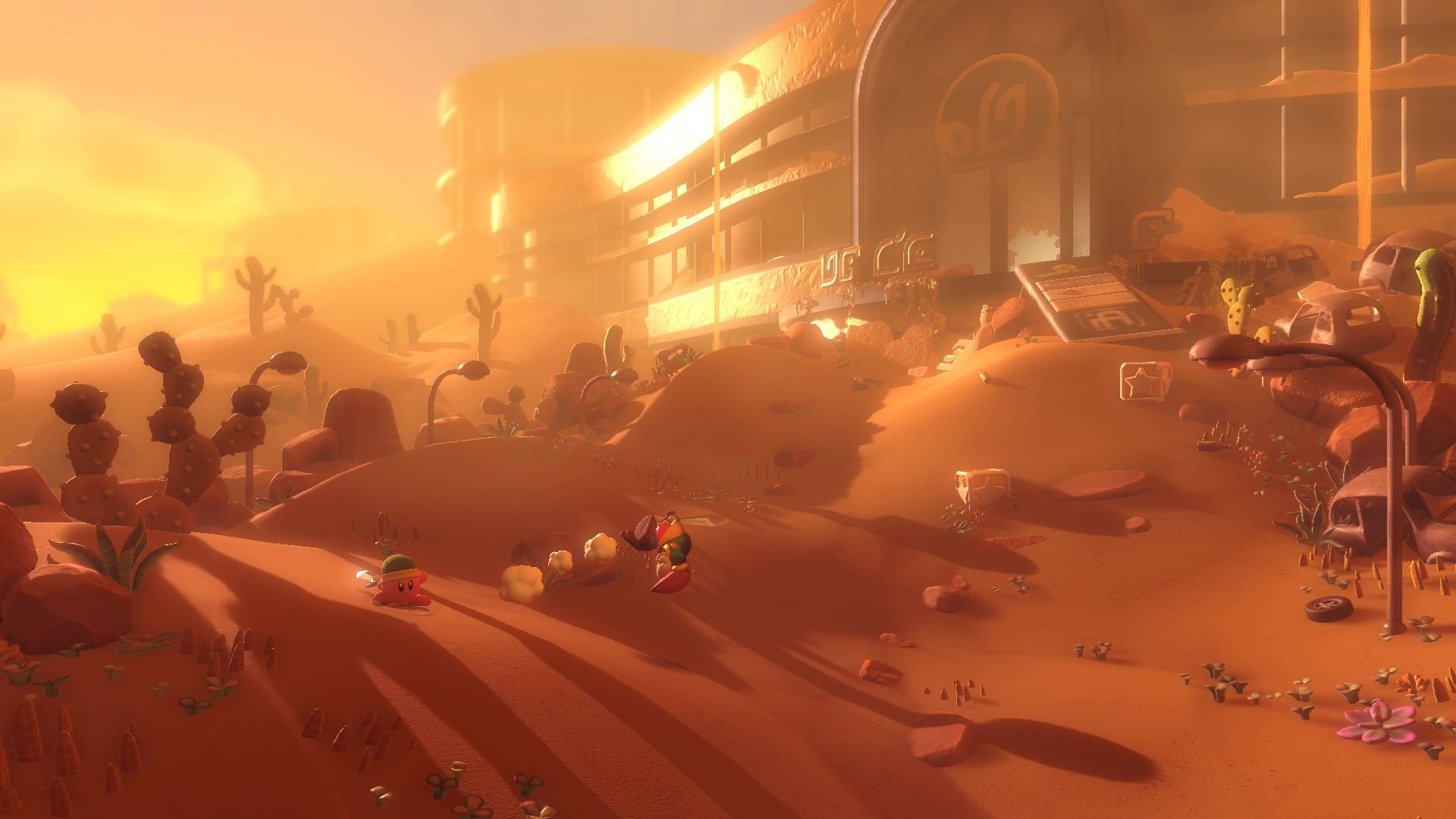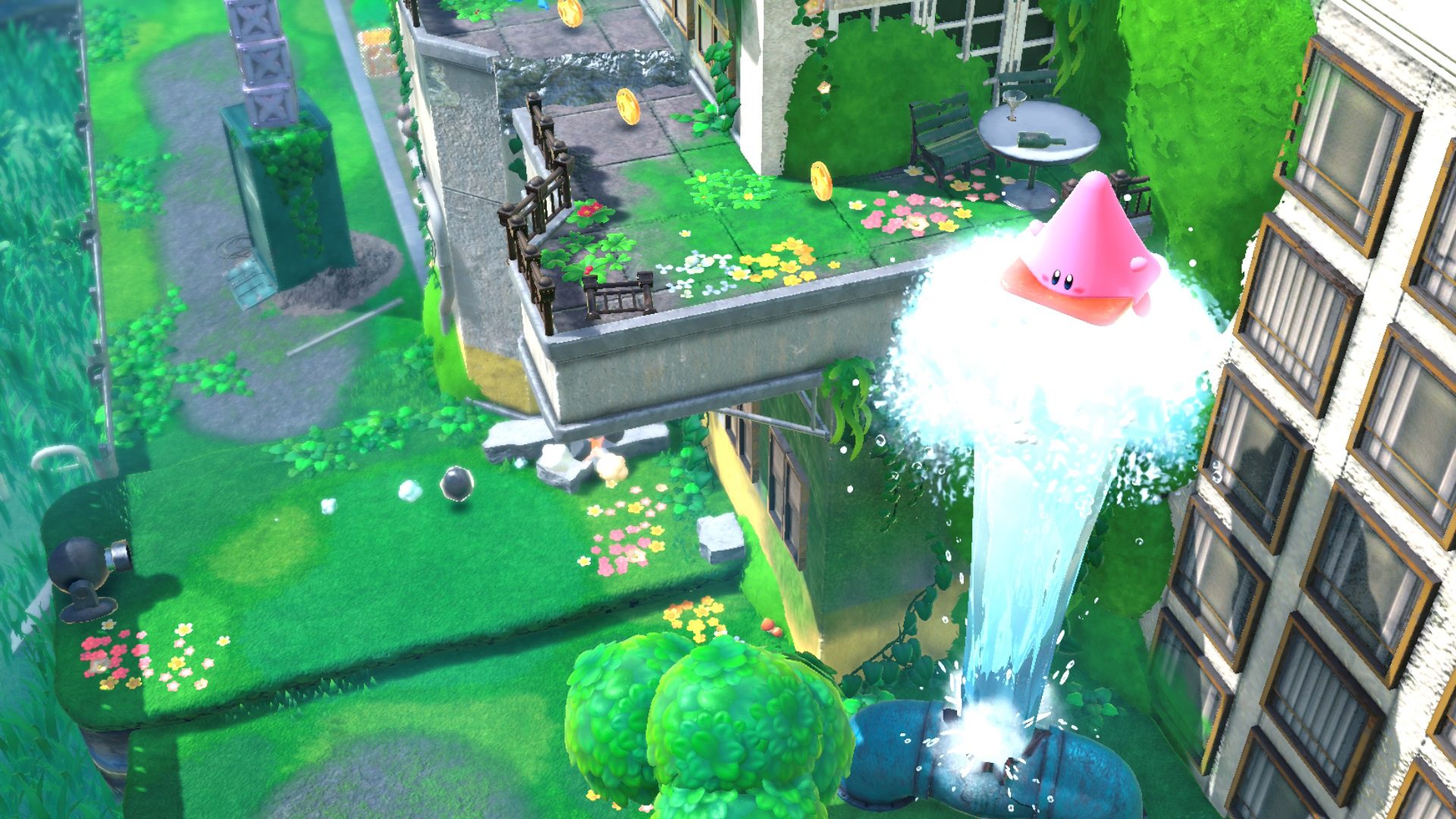Kirby, Kao, and the Simple Joys of 3D Platformers
Is the mighty genre returning to prominence?

After sinking a significant amount of time into Elden Ring, I was looking for something far breezier, shorter, and, well, far less likely to kick my arse. Luckily, I had a copy of Kirby and the Forgotten World looking forlornly at me from my slightly dusty Switch as I beat my head against the final bosses of Elden Ring. Kirby’s first foray into 3D was just the tonic I needed. It perfectly encapsulates everything great about the Kirby series and translates it into a suitably crisp and bright world.
Kirby has always been a series that was short on difficulty, much to the chagrin of some fans and reviewers, but the games are focused on easy-going fun and imagination above all else. They are about enjoying the tools at the powerful pink puffball’s disposal – the set of abilities Kirby can copy from his enemies and the novel core mechanics that often feature in the series. For example, the best of the recent batch of 2D Kirby games, Planet Robobot, asked a simple question: what if Kirby piloted a mech that also occupied abilities? The answer is ‘it would be cool as hell'.
In the same vein, it is really fun to go into ‘mouthful mode’ in The Forgotten World and pilot a Kirby-covered car, hang glider, or giant safety cone. Kirby is an ideal fit for 3D platformers because I believe it to be a genre that should and often does de-emphasise the challenge of pure platforming while focusing on the joy of movement.

Kirby and the Forgotten World is not the only new 3D platformer I’ve played in the last couple of months. I’ve played three in total, which feels like a lot for a genre that may not quite be dormant, but certainly has fallen quite far since its heyday in the PS2 era.
The first of those was the brilliant Sephonie from Analgesic Productions. Sephonie is very much a narrative-driven game, but the game is a 3D platformer at heart, one specifically styled like a PS2 game. Analgesic is a developer that seems to be on the crest of the current wave of indie dev nostalgia. They started with pixel art in Anodyne before adding PS1-style chunky polygons in its sequel amongst a spate of other (mostly horror) games doing the same. Now they have moved to the PS2-style visuals with Sephonie, with era-appropriate acrobatic platforming to match.
There’s likely more to come, as an entire generation of developers grew up with the 3D platformer being almost the genre du jour for kid-friendly games, especially if they delved into the bargain bin with the movie tie-ins and not-so-successful mascots.

This brings us to the game I’ve put time into most recently - Kao the Kangaroo, a reboot of the 2000s platformer series from Polish developer Tate Multimedia. When Kao (that’s pronounced K-O, because he’s a boxing kangaroo) was originally on the scene between 2000 and 2005, 3D mascot platformers were a dime a dozen. To give you an idea, Kao is the third most well-known series starring an anthropomorphic Australian animal. Fourth actually, if you include Looney Tunes’ Tasmanian Devil. But Tate Interactive has been able to keep Kao in the public consciousness with PC re-releases over the last few years, and enough interest was drummed up to develop a new entry, 17 years after the series initially ended. In that 17-year gap, realistically-rendered gruff men with guns replaced colourful jumping mascots as the most effective way to show off a console’s horsepower, and now the new Kao the Kangaroo has arrived in a far less crowded market.

Kao the Kangaroo shares a fair amount of the genre's DNA with Kirby and the Forgotten World. They’re both colourful, nice-looking games that won’t challenge the average player but will offer plenty of variety. Kao doesn’t quite match the highs of Kirby, but it is a competent 3D platformer. There are four different biomes with a hub-and-spoke level design. You have the standard platformer armoury – double jump, grappling hook, ground stomp, and a flurry of punches and tailspins for the enemy. Your gloves, which are magical talking heirlooms, can harness the powers of fire, ice, and electricity, which are mostly used for light puzzle-solving.
There are collectibles aplenty for those so inclined(I'm not), though two of the four sets of items functionally do nothing and are just there to be collected for the sake of it. I don't mind this decision, though it should have been clearly stated. The story is rote, basically a damsel in distress story with a kidnapped sister, and there are attempts at jokes that mostly fall flat but are harmless. The voice acting is stilted with American accents, which is probably for the best considering the leads are an Australian kangaroo and a Koala that’s a stock Asian mystic trope. Overall, it managed to scratch the 3D platforming itch that I had after finishing Kirby; it’s competent and not much more.
Kao is a classic 7/10 game from a 7/10 series but considering the lack of options, that’s enough. I’m not a big sucker for nostalgia trips, but its throwback platforming is uncomplicated but a nice, breezy time and a reminder that these kinds of games were on top of the gaming world for a reason.
Will 3D platformers enjoy a renaissance period in the years to come, in the same vein as horror games in the last decade, and Sonic over the past few years? It remains to be seen, but with the new ideas we're already seeing and retro series aplenty offering tons of inspiration, there's a lot for developers to work from.